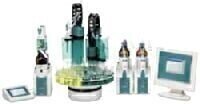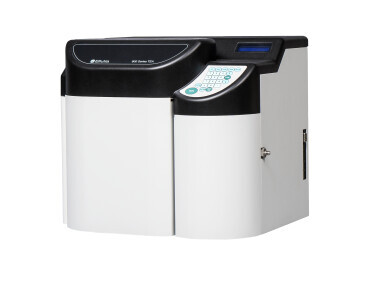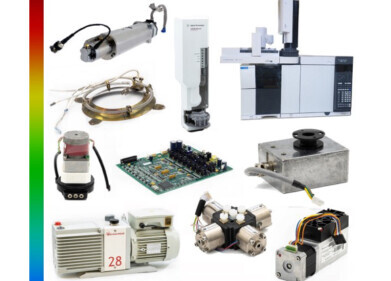Chromatography
Fully Automated Iodine Adsorption Number for the Determination of Surface Area.
Oct 30 2007
Analysts see the endpoints at different points because the method is so subjective. Metrohm have developed a method to completely automate this difficult procedure. The fully automated system consists of a 2 Tower Version 778 Robotic Sample Processor in combination with a 794 Basic Titrino. A combined Pt ring Metrosensor is used as the indicator electrode.
The sample rack accommodates 24 x 75 ml beakers. Sample preparation and reaction takes place on tower 1. 50 ml of iodine is added directly to 1 g of carbon black via a 800 Dosino, and is agitated and then allowed to settle. Pipetting and filter rinsing takes place on tower 2. 10 ml of the reacted iodine/carbon black sample is pipetted via another 800 Dosino through a special filter apparatus, and into the external titrating vessel, where the redox titration with sodium thiosulphate takes place. The filter apparatus is then back flushed with more iodine again using the 800 Dosino. The internal membrane pump adds diluent water prior to the titration. The same pump rinses the external titration vessel and the electrodes with a sophisticated spin rinse spray nozzle. The use of a 772 pump unit, attached directly to the 778 Robotic Sample Processor, guarantees an effective aspiration of the sample after titration. The whole system is controlled by Tiamo Titration software.
Digital Edition
Lab Asia 31.2 April 2024
April 2024
In This Edition Chromatography Articles - Approaches to troubleshooting an SPE method for the analysis of oligonucleotides (pt i) - High-precision liquid flow processes demand full fluidic c...
View all digital editions
Events
Apr 28 2024 Montreal, Quebec, Canada
May 05 2024 Seville, Spain
InformEx Zone at CPhl North America
May 07 2024 Pennsylvania, PA, USA
May 14 2024 Oklahoma City, OK, USA
May 15 2024 Birmingham, UK






.jpg)











